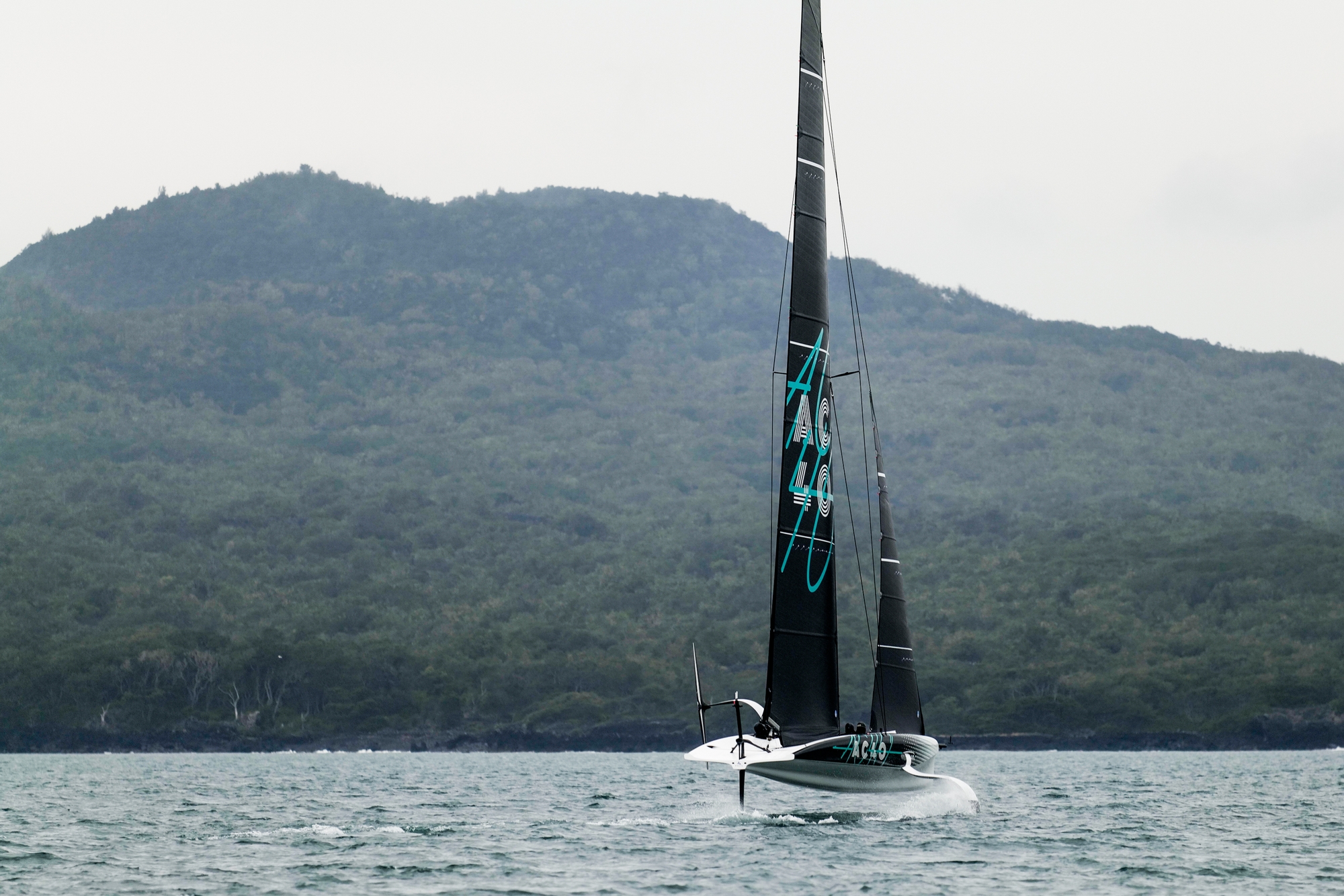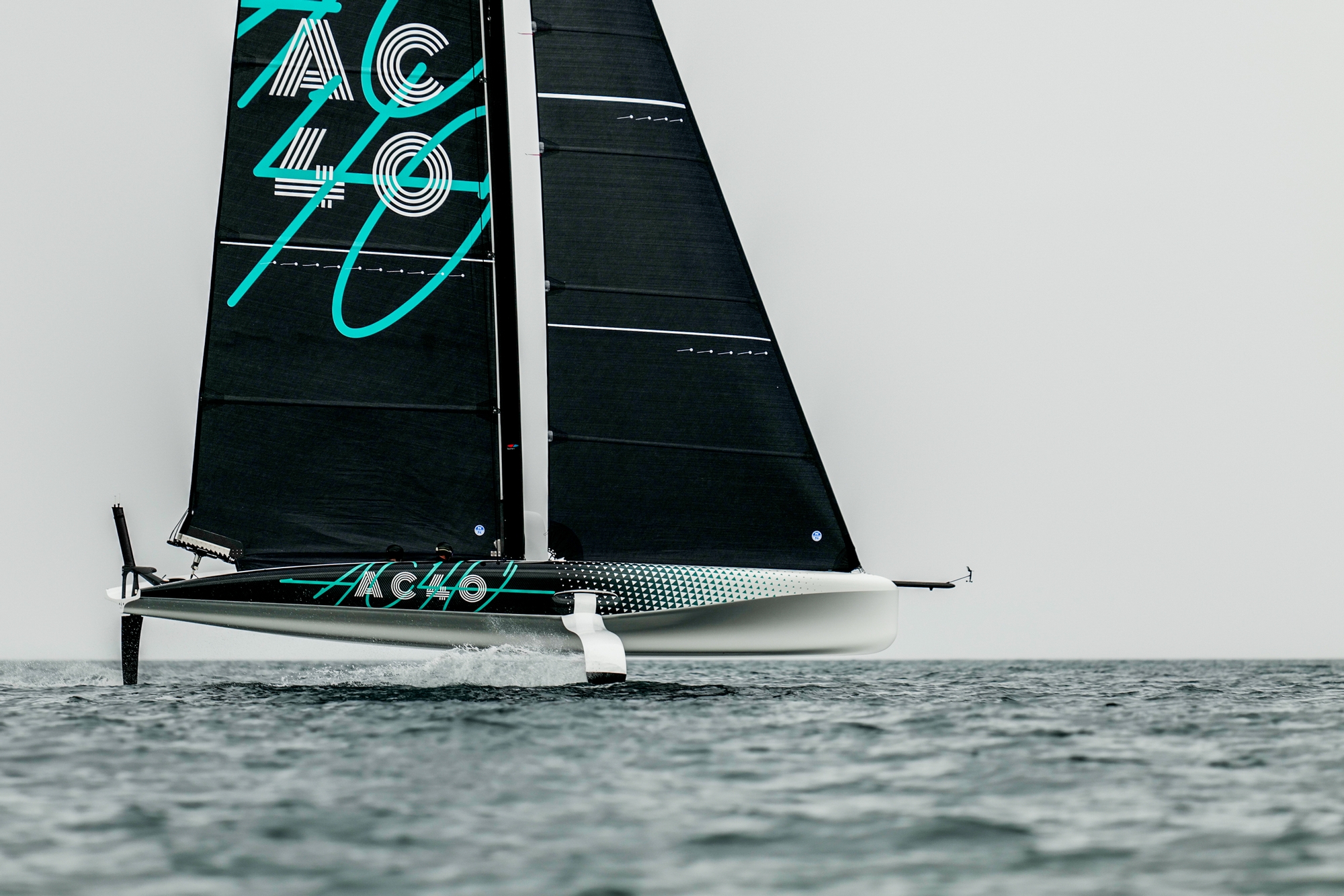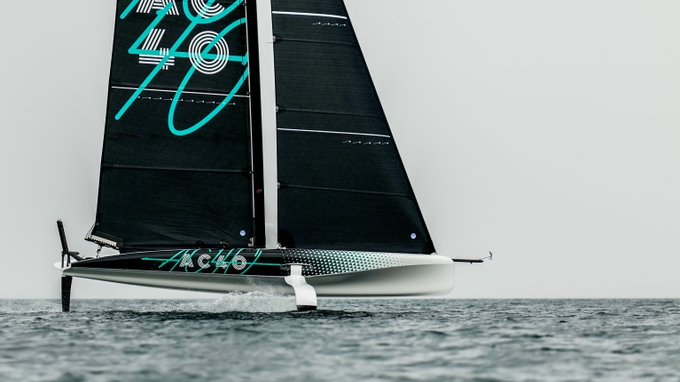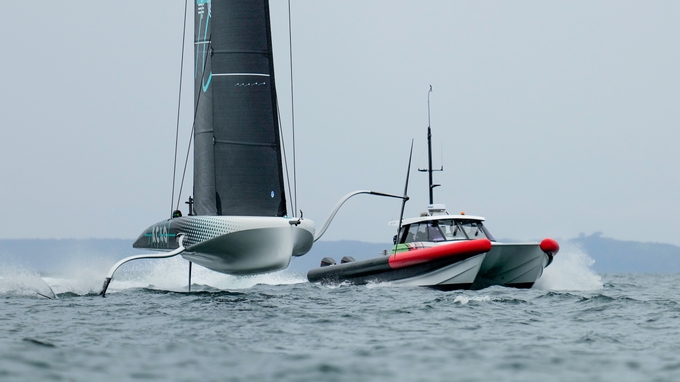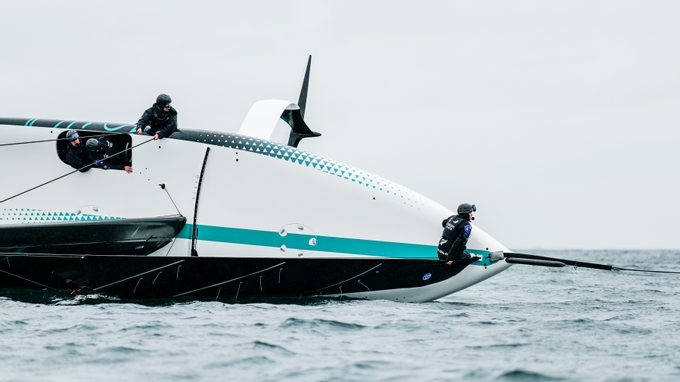AC40 AT 40
The headline writers might easily scream about today’s layover but as all sailors know, it’s very much part of the sport of sailing, and the most annoying ones happen at low or no speeds.
And so it was today out on a perfectly smooth Hauraki Gulf just ahead of persistent rain cover that saw Emirates Team New Zealand slide over on their side after disconnecting from the chase boat having changed down their jib.
With the boat effectively stuck in irons and no water flowing over the inverted gull wing rudder, the hull form elicited a capsize with very little that the crew could do about it. In a flash the chase boats were in and attaching a line to the bow and just moments later the AC40 was back up and flying. “We pushed off, didn’t have enough forward momentum and started going slowly backwards,” commented Ray Davies, “so to get the boat out of going backwards, you invert the mast the other way to drive the stern to windward and then we’re slowly getting out of irons and then we went into a slow capsize.”
Once the boat was upright, a crew member jumped below to check for water ingress but with all the systems inboard, any water drained away rapidly, and the day continued. Forward momentum is key in any foiling boat, but the day’s headline was a brief blot of less than five minutes on an otherwise amazing commissioning session for the Kiwis who are proving the ease of the AC40 and why it’s such a compelling plug-and-play platform for not only testing but for the Youth & Women’s America’s Cup sailors.
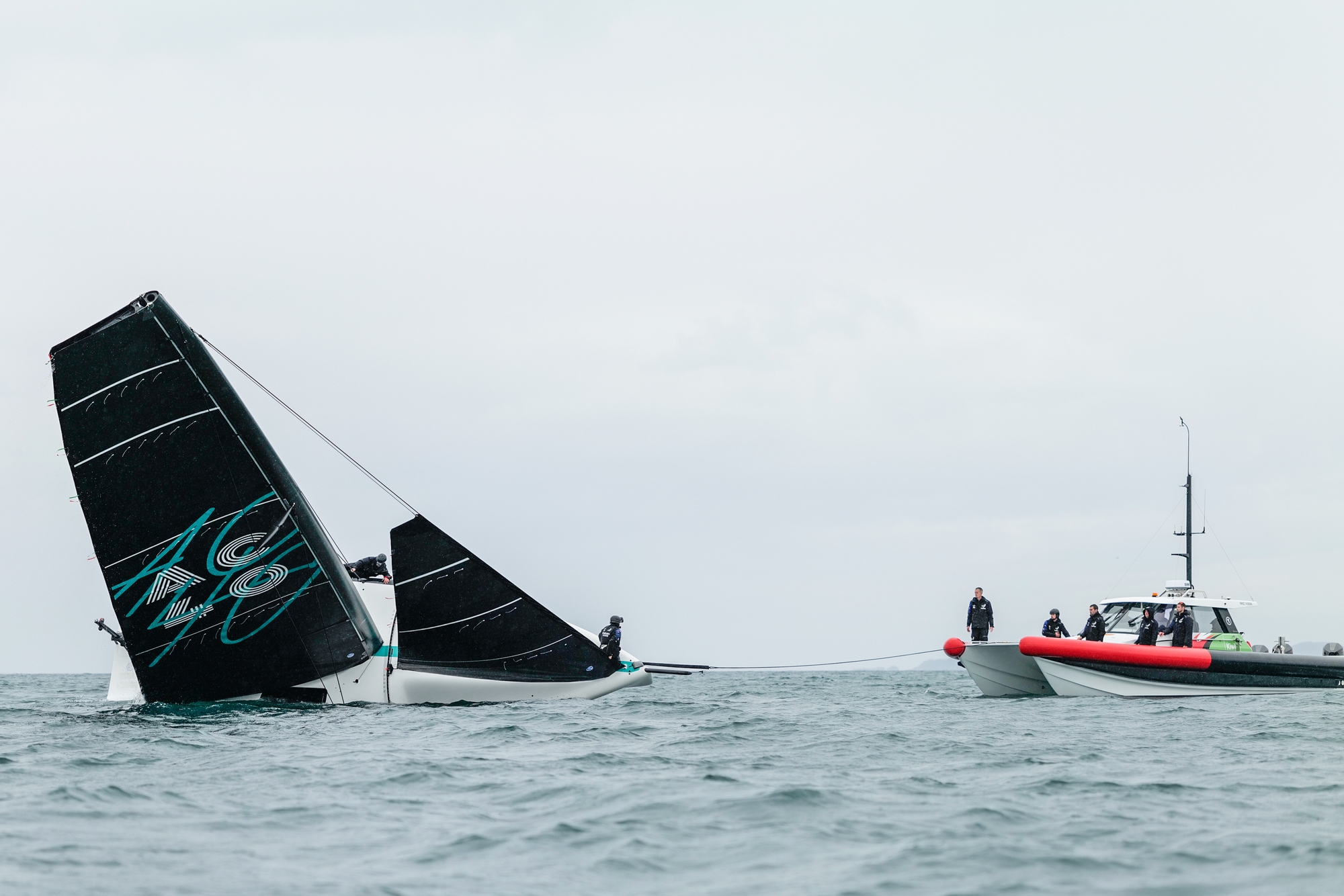
In over four hours of sailing, the team led by Nathan Outteridge and Ray Davies started to really apply the pressure, hitting speeds in excess of 40 knots whilst all the while tweaking the auto-pilot to build up vital data that will be shared around the teams in open-source updates.
Downwind on one high-speed run, the AC40 buried its flared bow as the helms, seated in pods either side of the boat and in the forward position, tested a new mode as Davies explained later: “We were testing different auto-pilots and this one just went hard one way which caused the rudder to lift the stern and stuff the bow in. Not an ‘event’ just a test.”
And with a range of conditions today from glassy to moderate, the team found that take-off could be achieved at around 7.5 to 8 knots of boatspeed, something that they are looking to reduce even further with better technique over the coming days.
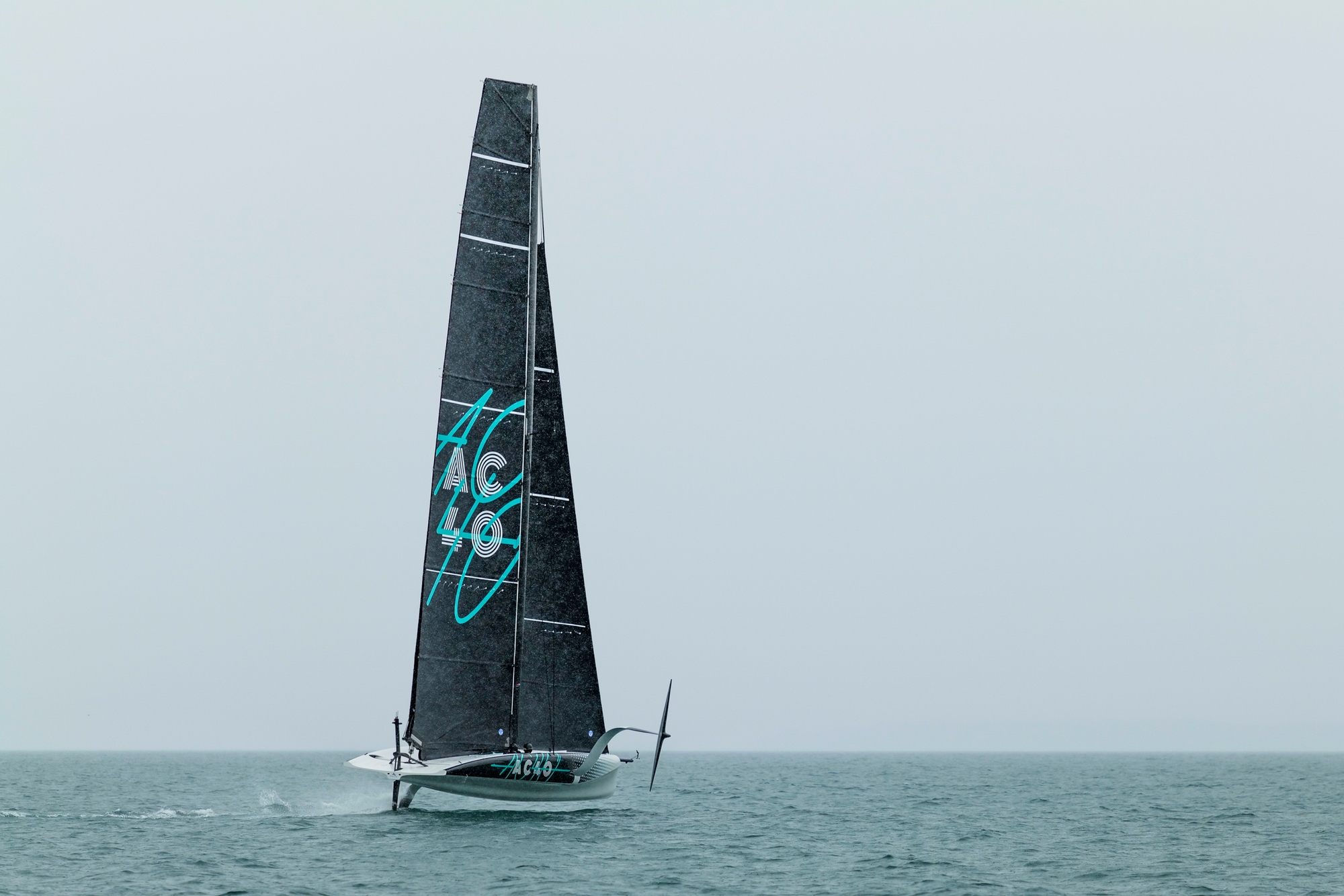
Once airborne however, the AC40 stayed on its foils consistently as Davies explained: “Once up, in these light conditions, you stay up for a long, long time. And you really don’t need that much sail area as it just becomes drag.” Hence the team went through pretty much their entire jib inventory today, changing down to ever smaller and smaller jibs. Tacking and gybing angles were estimated at a flat 90 degrees and after a thorough day on the water, the team returned to a wet Wynard Point for the haul out and systems checks.
Another great day on the water for the exciting AC40.
